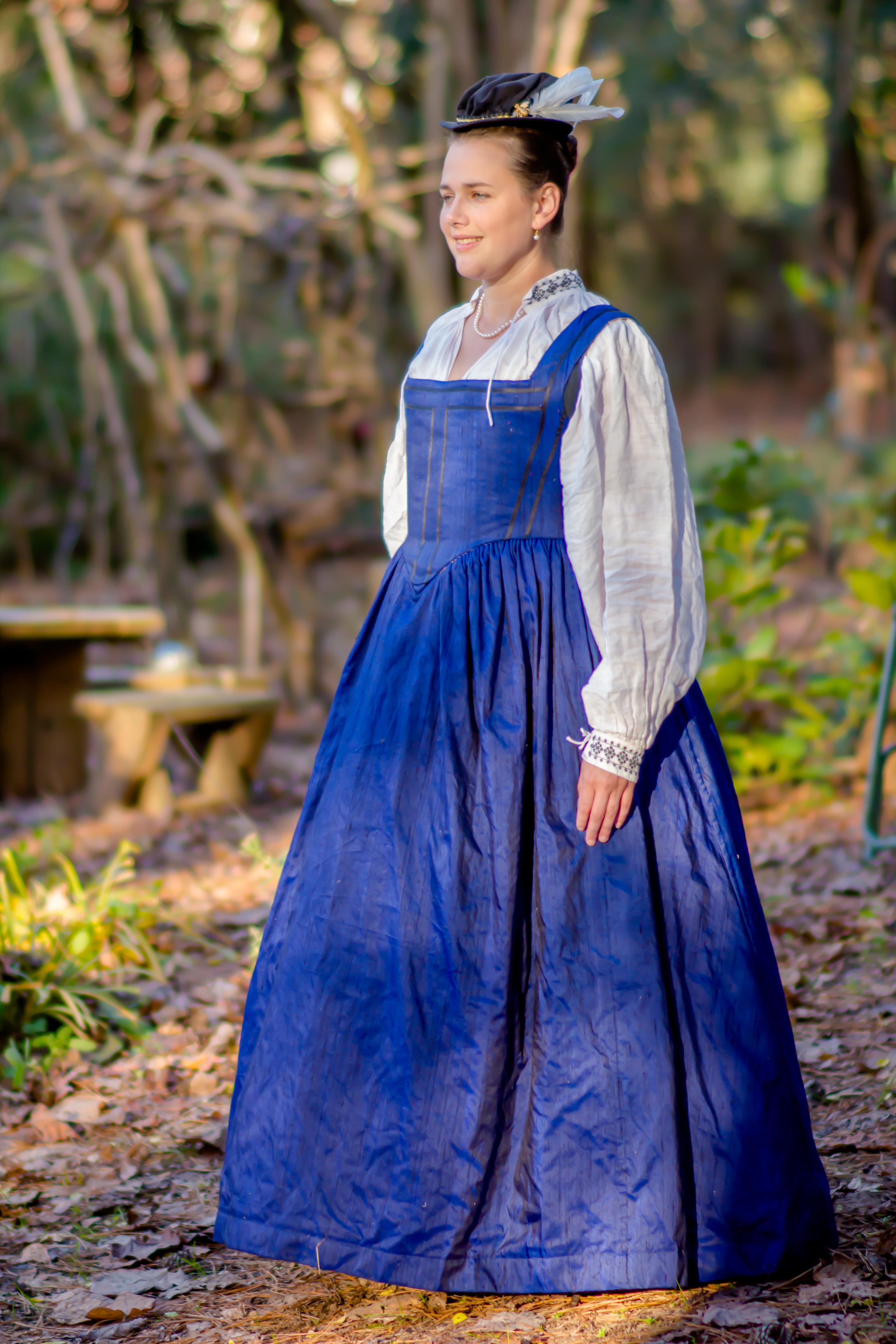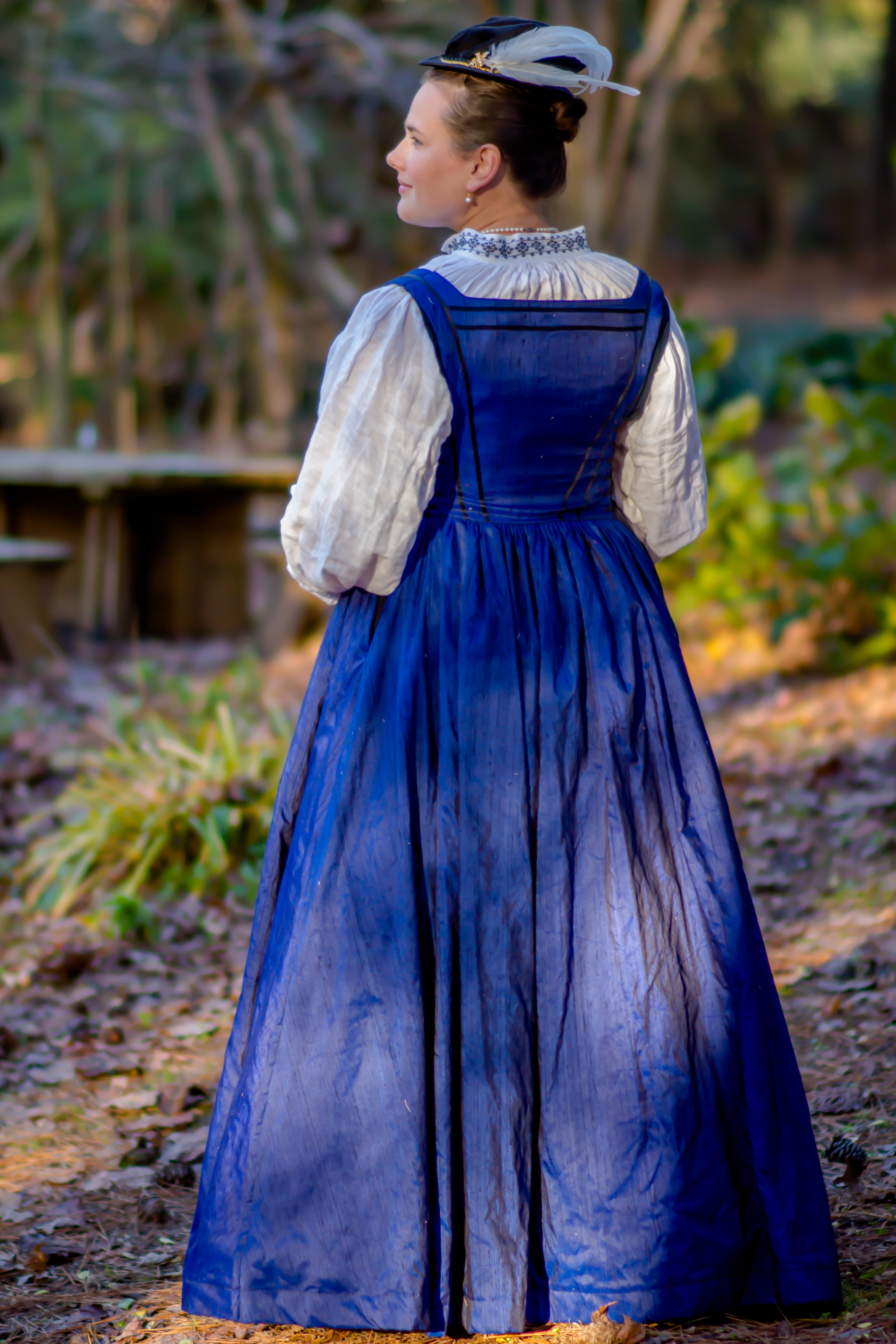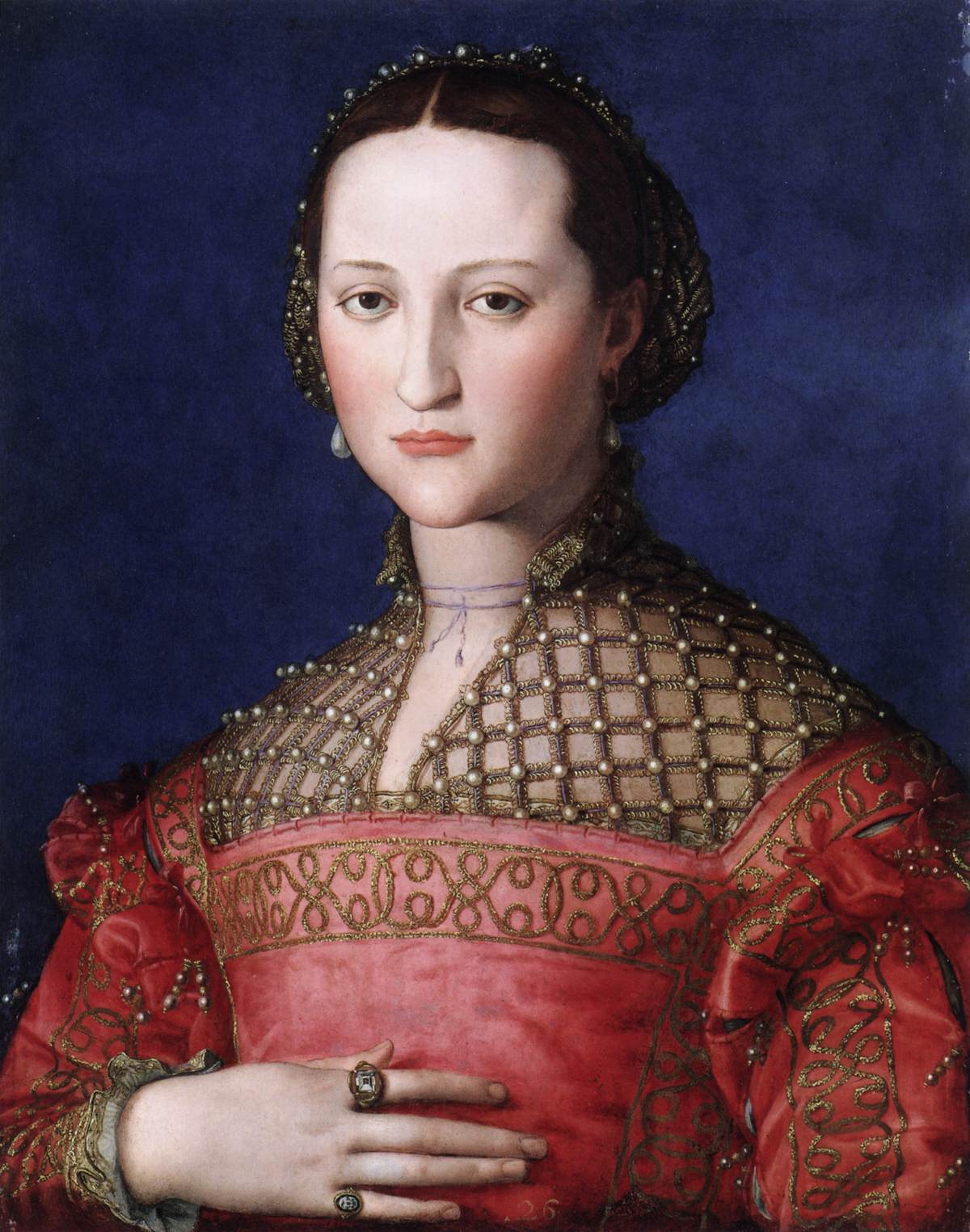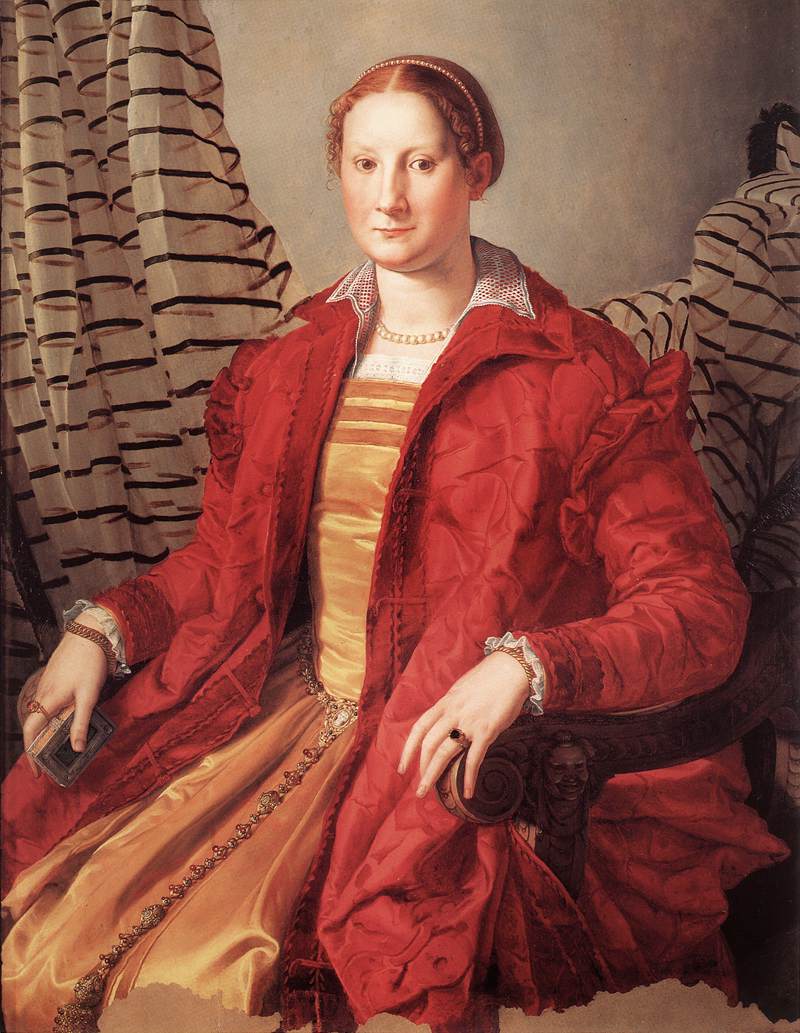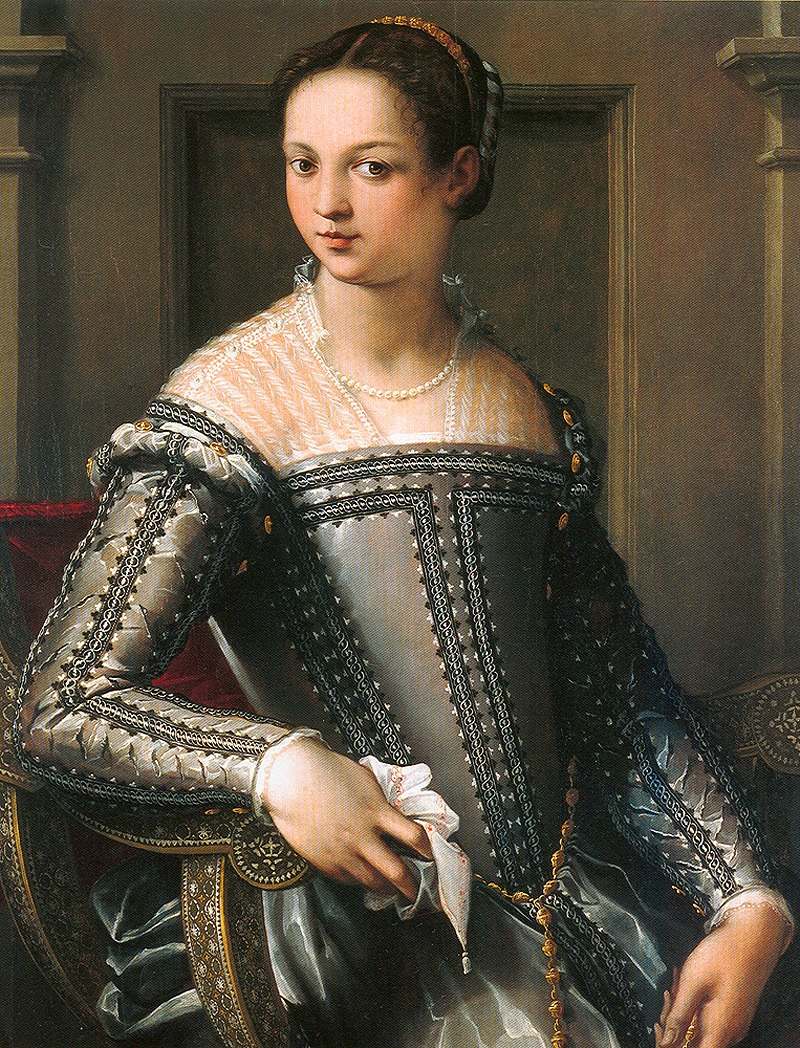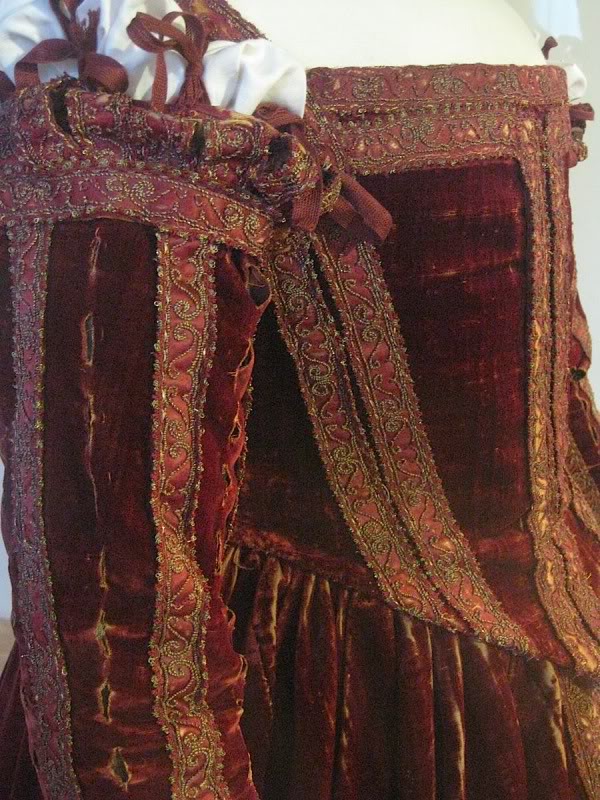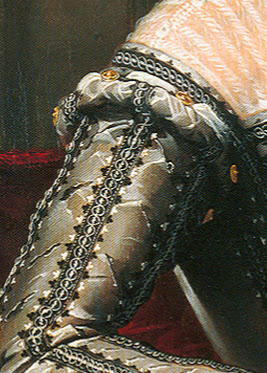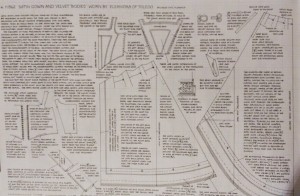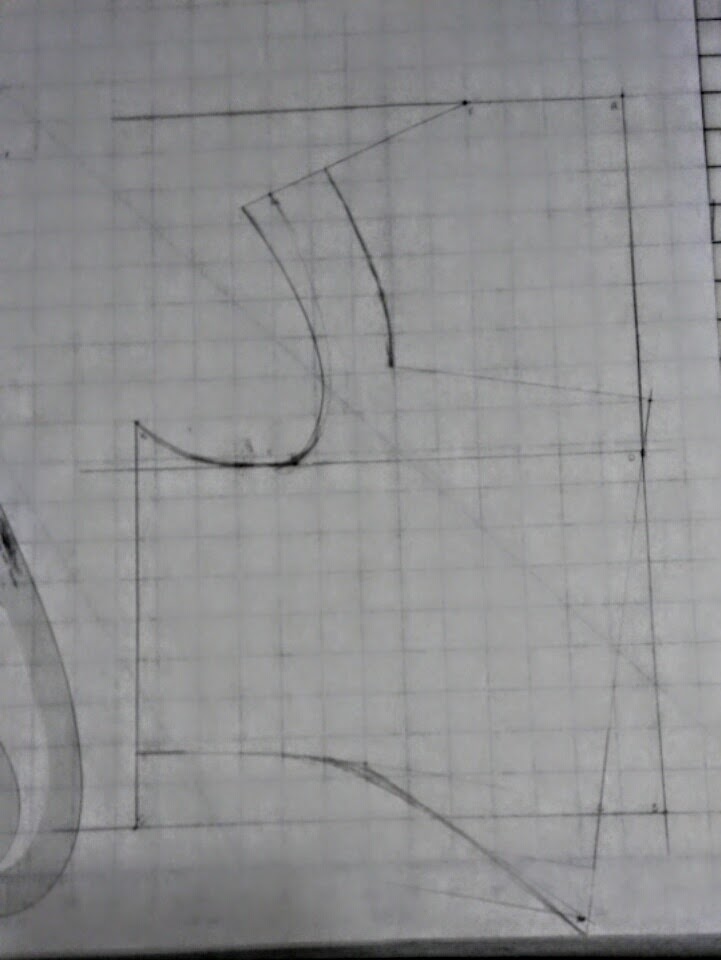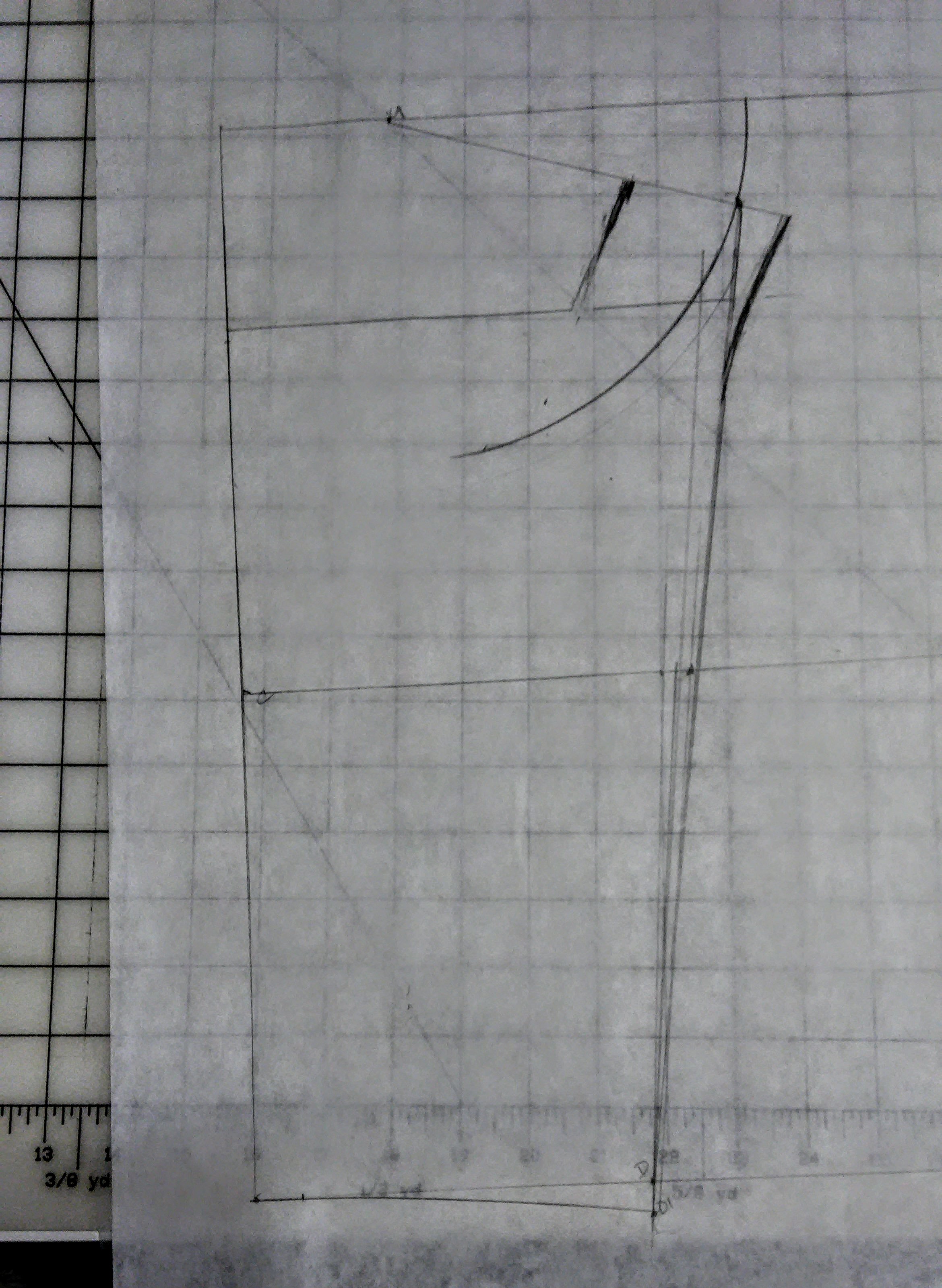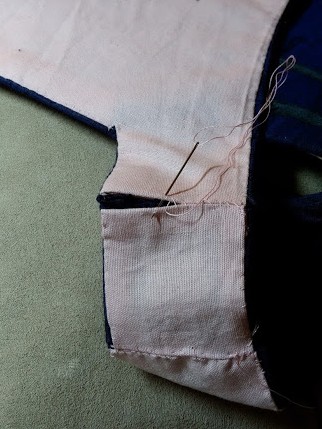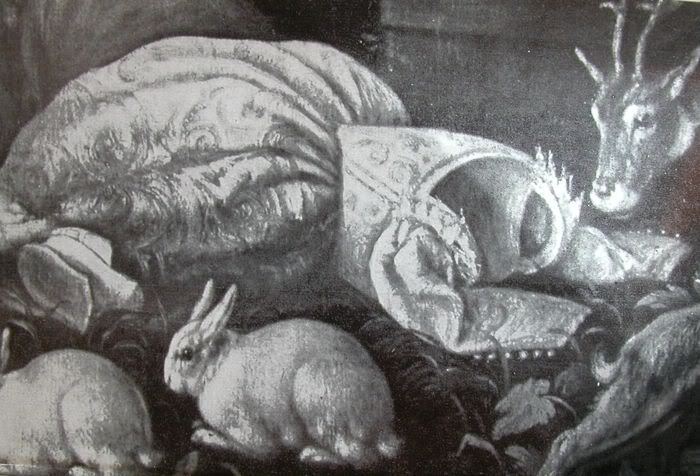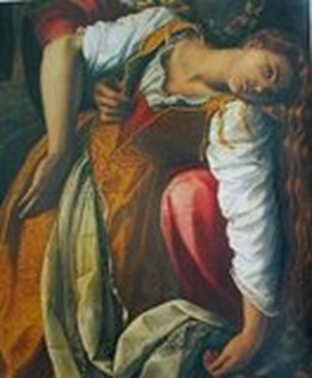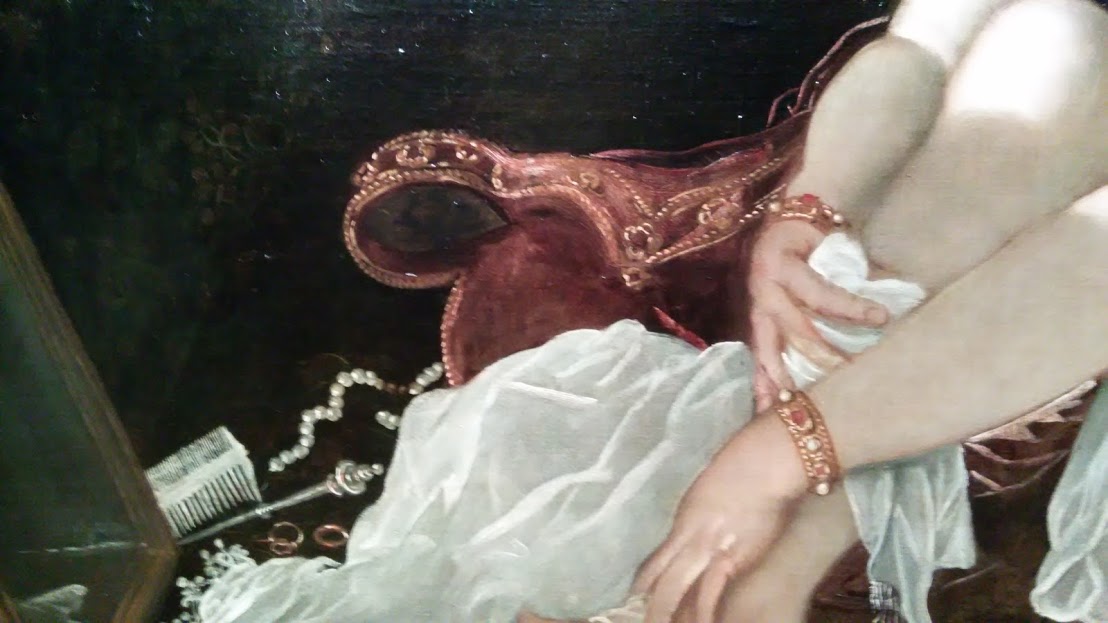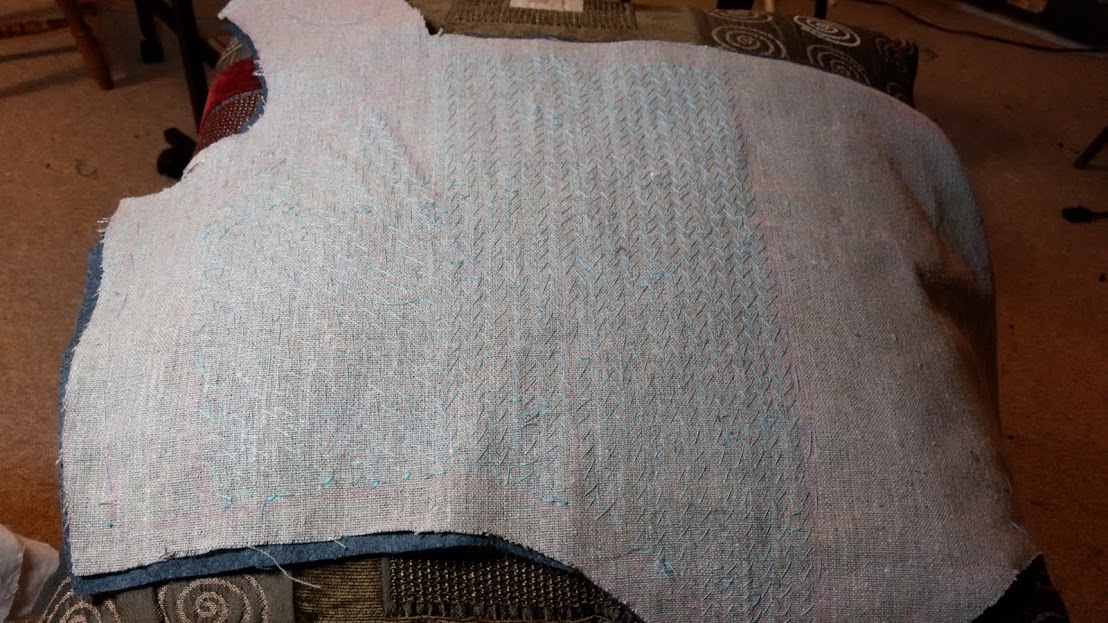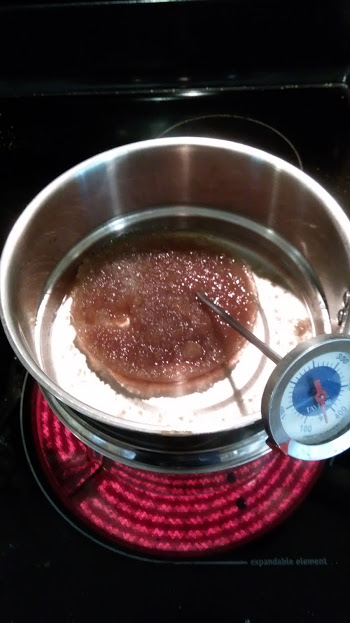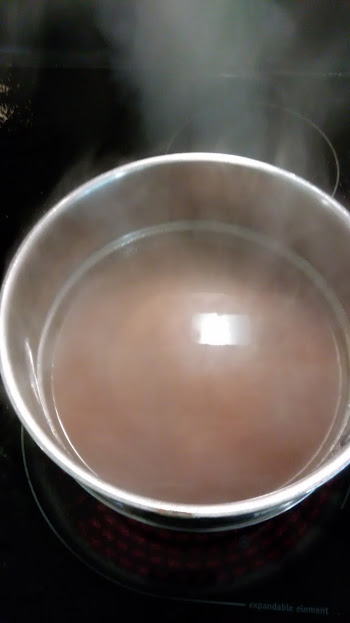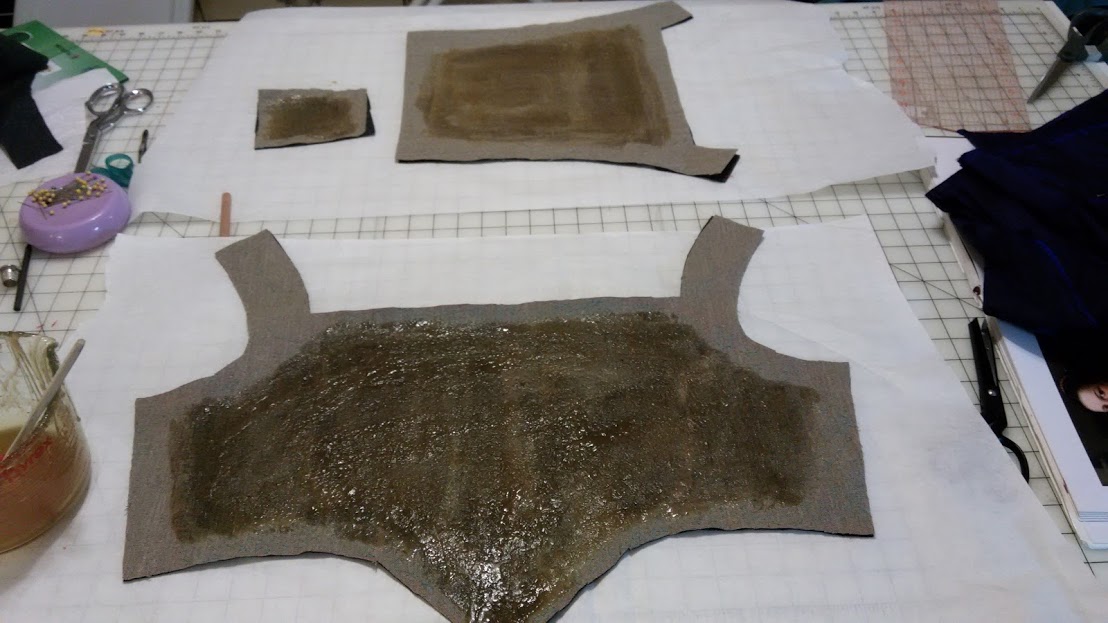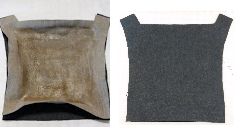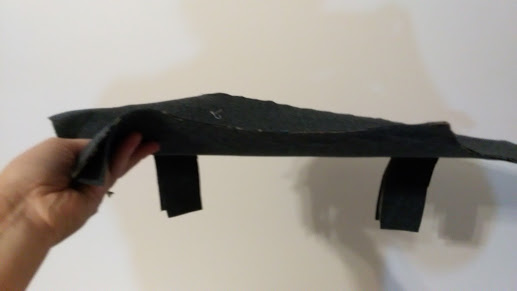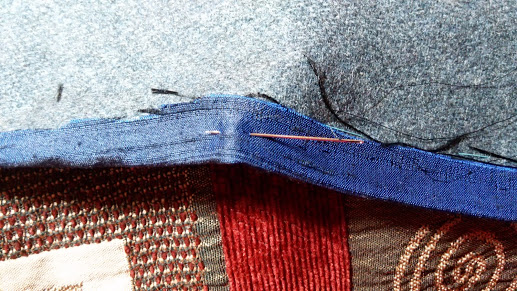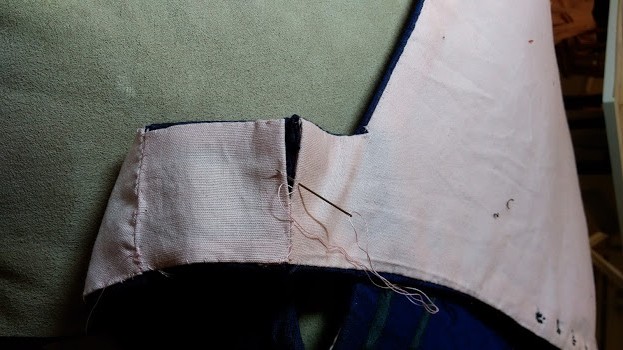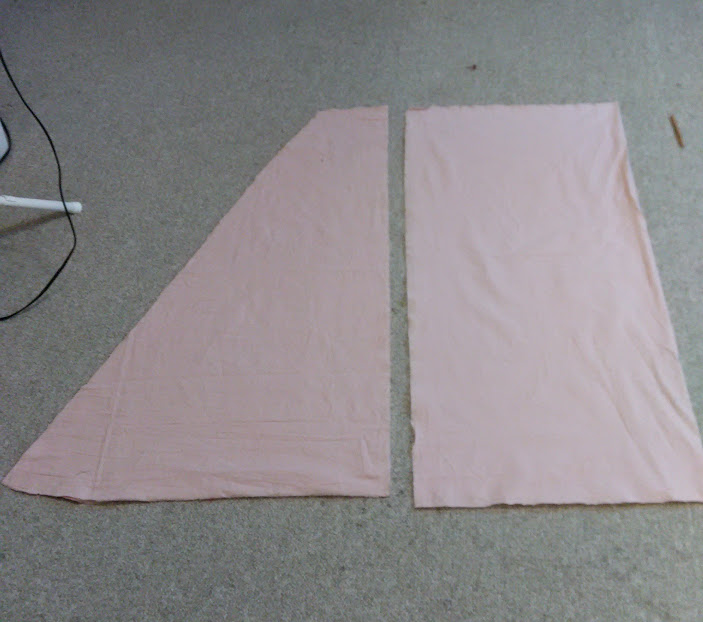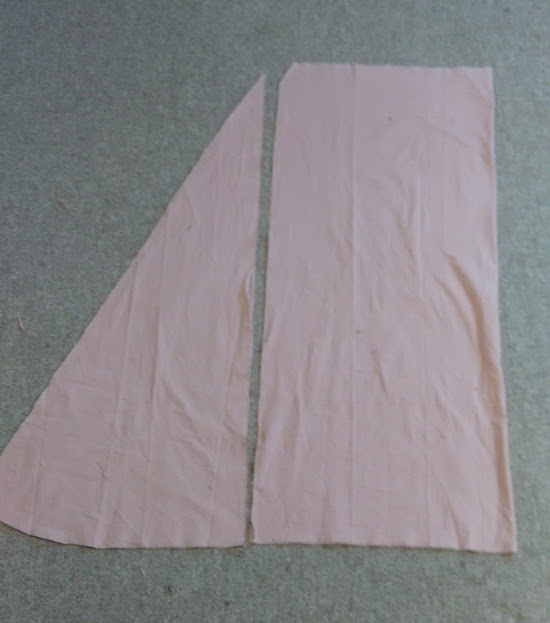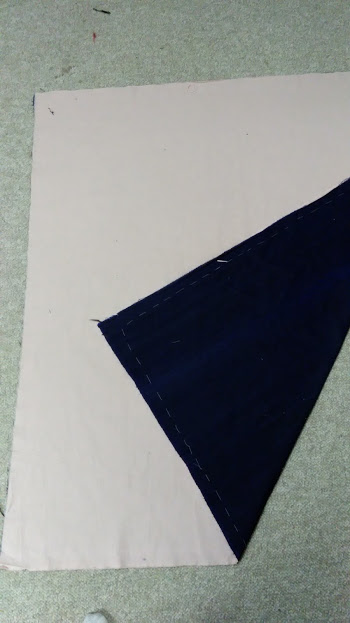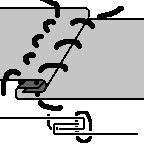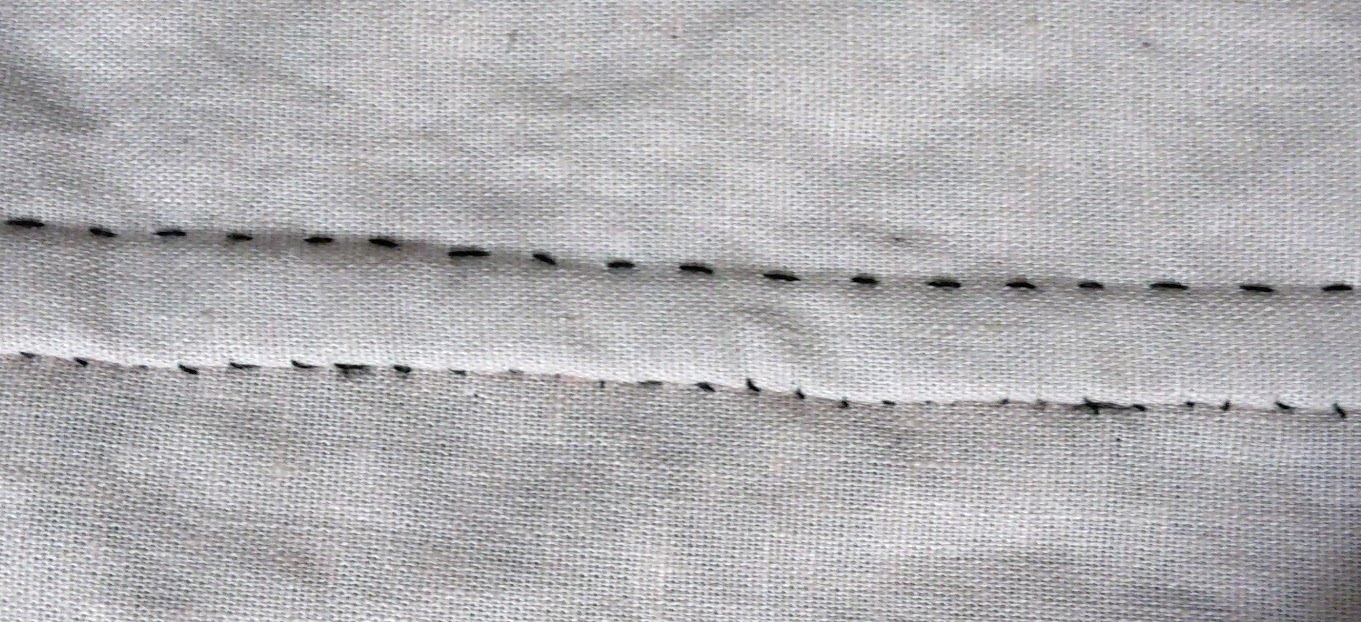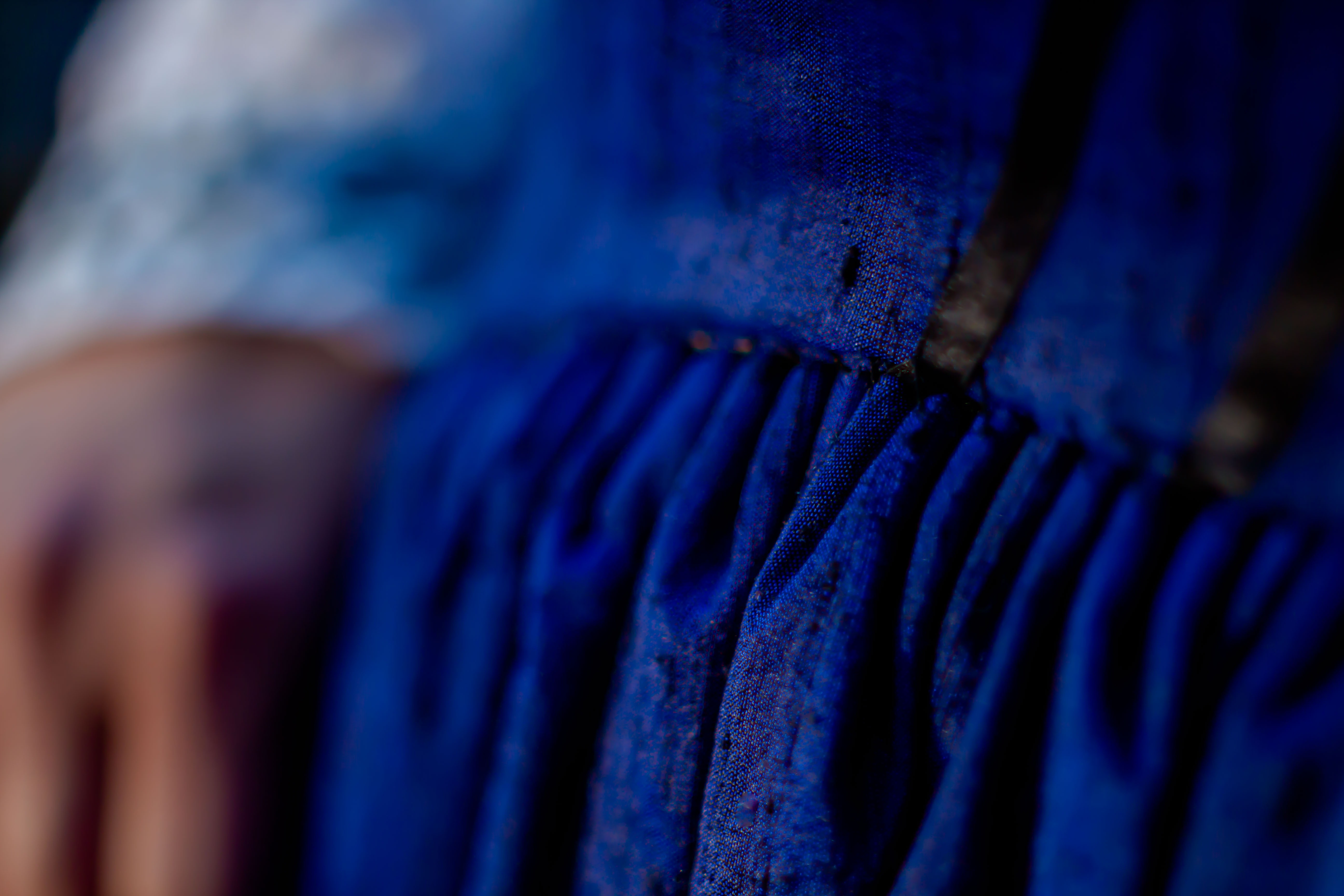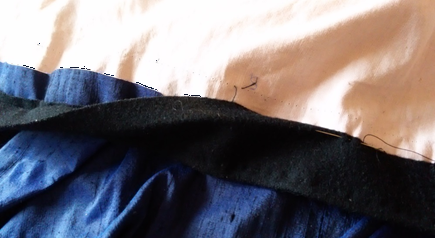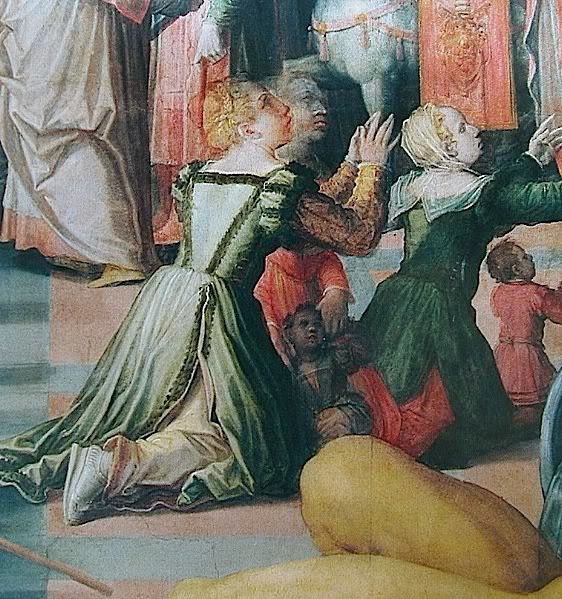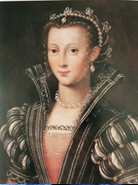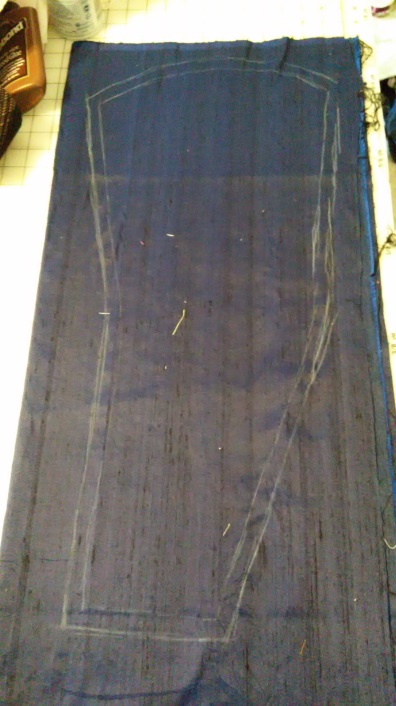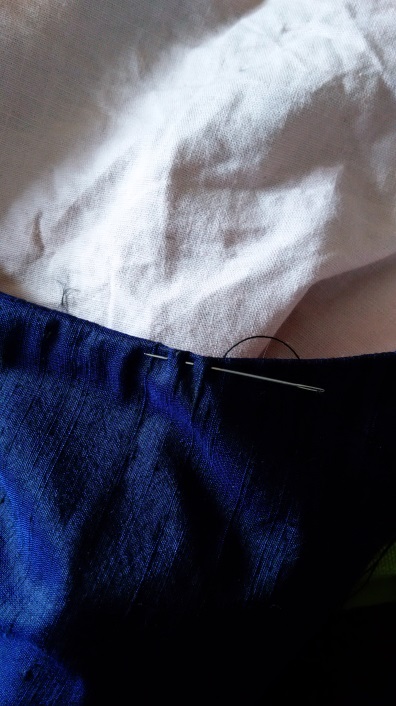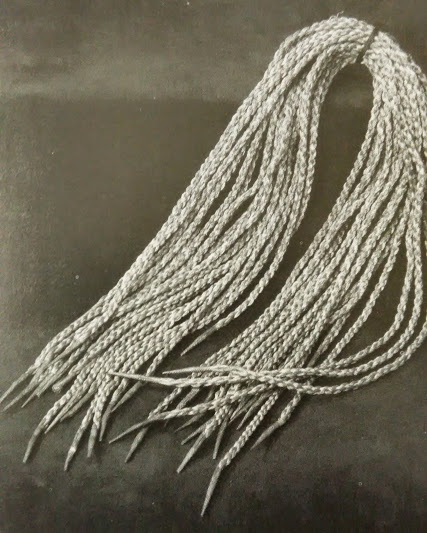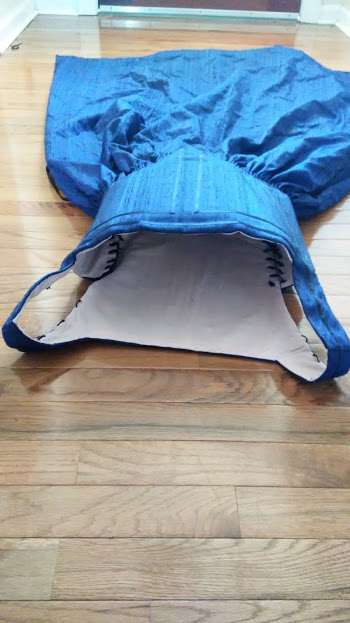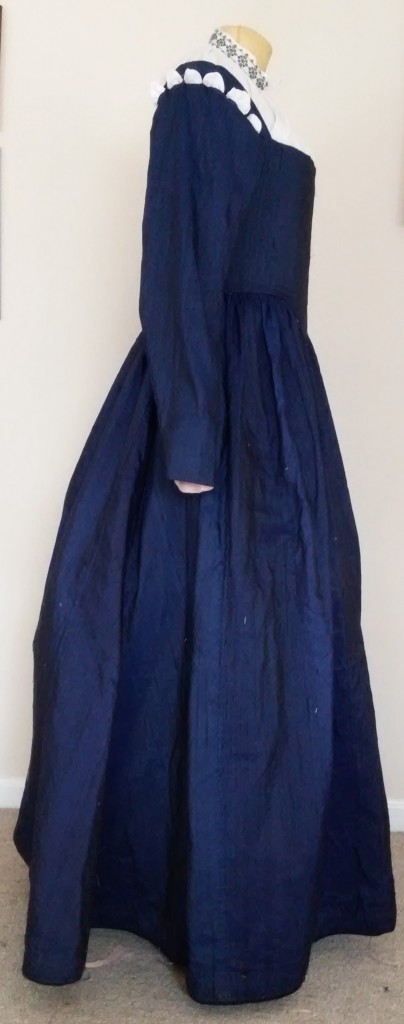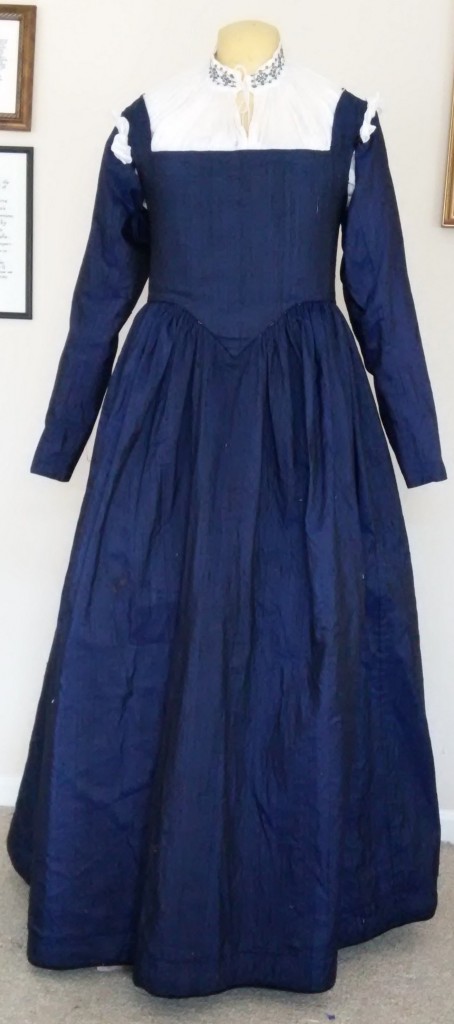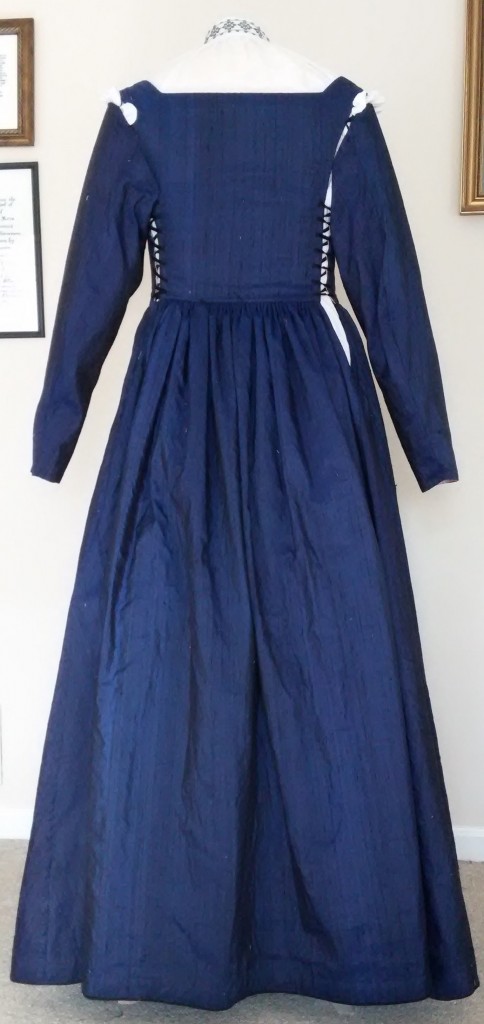The sottana,[1] also known as a petticoat with attached imbusto (bodice), was a mainstay of fashion in 16th century Florence. It was sometimes worn as a standalone garment and sometimes underneath other clothing[2]. It could be worn with or without sleeves, as dictated by the temperature or the other layers with which it was worn. “Between the 1540s and 60s, corresponding to the period in which the costumes of the Duchess Eleanora are registered, the petticoat… took on the appearance of an independent garment, frequently provided with train, particularly elaborate in terms of both decorations and materials.” [3] Women of all stations wore similar garments, though there are many variations due to value of construction materials. It was a staple of the 16th century Florentine woman, able to be dressed up or down based on the status of the wearer or occasion. The components of the sottana were a bodice (imbusto) sewn to a skirt (falda) and sleeves . The bodice could be laced through eyelets on the sides or the front .[4] The skirt could be made with or without a train. There are some portraits that suggest set-in sleeves[5], but many are detached from the gown. The sleeves could be “attached at the moment of dressing by means of laces or ribbons”[6] or with decorative buttons . [7] Sleeveless gowns were also worn, evidenced by “several sleeveless petticoats in [Eleanora’s] wardrobe.”[8] Her burial gown may have been a sleeveless petticoat as there is no remaining evidence that sleeves were attached to her gown.[9]
Figure 1 Petticoat worn with detachable sleeves. Angelo Bronzino, Eleonora of Toldeo, c, 1543. Prague, Narondni Galerie
Figure 2 Yellow sottana worn with red zimarra Agnolo Bronzino, Eleonora of Toledo?, detail c.1550, Turin, Galeria Sabauda
Figure 3 Jacopo Zucchi, Portrait of a Woman, c.1560-65, Florence Metropolitan Museum of Art, New York City
Figure 4 Detail of sleeves attached with ribbons. Petticoat with sleeves, c. 1560, Pisa, Museo di Palazzo Reale.
Figure 5 Detail of sleeve attached to a grey petticoat. Jacopo Zucchi, Portrait of a Woman, c.1560-65, Florence Metropolitan Museum of Art, New York City
MATERIALS AND TOOLS
The tools used in period to make the sottana included scissors, needles, pins, thimble, and chalk (use to marking the fabric for cutting), hide glue along with beeswax for strengthening the thread. The tools I used were modern sewing needles, pins, scissors, tailors thimble, chalk, aglet crimpers, beeswax, silk and cotton thread.
“Between 1544 and 1562 there are records of at least 90 petticoats made for Eleonora di Toledo.” [10] Materials used for these gowns were varied and included: silks in the form of: taffeta of different weights, satin, damask, and velvet; cloths of gold and silver, and wool.[11] Period construction included layers of fabric inside the bodice for support. Landini notes, “The padding of the garment was obtained by an internal layering of fabrics, the doppia, made up of a felt and two types of cloth, one stiffened, the other finer.” [12] Eleanora’s gown had remnants of a linen lining, but there are no stiffening materials remaining save in the hem, which is stiffened with wool. [13] The predominant gown colors were shades of red, but other colors included grey, brown, incarnate (flesh tone), purplish violet, white, sky blue, yellow, green mauve , aquamarine, and gilt . [14]
Part of my personal challenge in making this dress was not buying any materials and using up my stash of supplies as much as possible. Consequently, I used: blue and black dupioni silk, linen cotton blend, linen canvas, wool, silk and cotton thread, and hide glue . Cotton tatting thread was used to weave the laces. Stitches used in constructing this garment include: running, whip, slip, back, pad, and cartridge pleating. [15]
PROCESSES
The overall patterning for this dress is similar to that of Eleanora’s burial gown which has been diagramed by Janet Arnold. Eleanora’s gown featured a skirt of rectangles and gores, shaped at the waist to fit the bodice with pleats. The bodice was without allowance for the bust with wide set shoulders and laced on the side back. The eyelets were worked through the embroidered guards on the back which may indicate that the bodice was taken in. The hem was faced in matching fabric cut on the bias and bits of wool remain inside the facing. The skirt opening was bound in bias cut strips of matching fabric. ”
For my own pattern I used flat drafting on paper to develop the pattern, similar to the burial gown. Due to rapid weight fluctuation, I purposefully drafted the bodice smaller than my measurements. I added a small extender to the strap to enable a proper fit at my current size[17]. Eleonora had 11 children in a 14 year period, and most certainly had to deal with the same issues.[18] . After the birth of Lucrezia in 1545 it was noted, “the bodice of a very beautiful [sottana] of Eleonora’s in red satin decorated in gold was later remade ‘the way it was before the birth.’”[19]
Figure 8 Pattern front.
Figure 9 Pattern back
Figure 10 Small strap extension
The bodice consists of the following layers: linen cotton blend, wool, stiffened linen, wool, and silk. To give the bodice more stiffness, the wool and heavy linen is pad stitched together.[20] While I do not have evidence for pad stitching interlinings on a sottana, it was commonly used for structure in men’s doublets, and was used in the yoke of a woman’s loose gown. [21]
The next step is the hide glue stiffening. When discussing the funeral dress of Giulia Varano of Urbino , Anea Arnesen provided her own translation of I della Rovere, which states:
The bodice was stiffened by two layers of padded linen hardened with (probably animal) glue placed between the outer fabric and the taffeta lining, and it had a wide, square neckline typical of Italian Renaissance dresses .
Hide glue is an adhesive made by extracting the proteins in the bones, skins, horns and hooves of animals into a gelatin material. Once applied and cured, it can be reactivated using heat and moisture. In the 15th century, Cennini noted the making of various glues including the following,
“And there is glue which is known as leaf glue; this is made out of clippings of goats’ muzzles, feet, sinews, and many clippings of skins. This glue is made in March or January, during those strong frosts or winds; and it is boiled with clear water until it is reduced to less than half. Then put it into certain flat dishes, like jelly molds or basins, straining it thoroughly. Let it stand overnight. Then, in the morning, cut it with a knife into slices like bread; put it on a mat to dry in the wind, out of the sunlight; and an ideal glue will result. This glue is used by painters, by saddlers, and by ever so many masters, as I shall show you later on. And it is a good glue for wood, and for many things.”
This makes it ideal for its most common use today in woodworking. However, these properties also make it ideal for use in clothing.[23]In addition to the remnants of Gulia’s dress, there is pictorial evidence of stiffened bodices. [24]
Figure 11 Lenardo Bassano, Susana at Her Bath, 1592, Munich, Germany
Figure 12 Alessandro Allori, San Fiacre healing the sick, detail, 1596, Florence, Church of Santo Spirito.
Figure 13 Il Tintoretto, Susana and the Elders, 1560-62 Vienna , Kunsthistorisches Museum,
Hide glue is a perfect substance for stiffening bodices. It is semi flexible and can be reactivated using heat and moisture. The downside is that it is reactivated with heat and moisture; and I live in a very humid part of the country. Reactivating the glue could cause it to bleed through the fabrics of the bodice and that is a problem. To help me solve this problem a friend generously offered to test some samples at Pennsic to see what manner of layering worked best contain the glue yet preserve its stiffening qualities.[25] Most of the samples had bleed through of the glue, but the layer that was surrounded by a layer of wool on each side survived well.
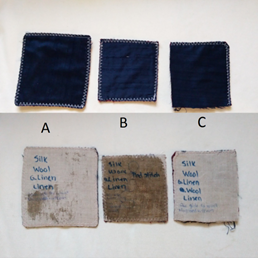
Figure 14 Samples A – C. C is stiffened linen between two pieces of wool. It is the only sample that did not have bleed through.
The next step is the pad stitching of the bodice. [26]
The experimental samples used Titebond hide glue. Unfortunately, that brand smells horrible. For the bodice, I purchased hide glue granules and reconstituted them. [27]
Figure 16 Granules in water.
Figure 17 Completely dissolved and ready to use.
Care was taken to avoid putting the glue places that would need eyelets sewn and on the shoulders where flexibility would be needed. [28]
After drying the second layer of wool is placed over the glue and the layers are ironed. This reactivates the glue enough to make the second layer of wool stick, and fixes the distortion of the shape from drying. This results in a very stiff bodice. [29]
Figure 19 Bodice back before and after the second layer wool is added.
Figure 20 Front of bodice after ironing layers together.
At this point the seam allowance was trimmed and the silk outer fabric wrapped around the inner layers. It was sewn to the interlining using backstitch. Seam allowances were clipped as necessary. The back of the bodice was constructed the same as the front, but without the pad stitching. The lining was attached with slip stich. The front and back were attached at the strap edges with whip stitch. Eyelets were sewn into the back side openings using whip stitch in perle cotton.[30]
Figure 21. Wrapping the silk around the interlining and attaching using back stitch.
Figure 22 Attaching the front and back at the strap using whip stitch.
The patterning of the skirt is derived from the burial gown but adjusted to better fit my available fabric and accommodate the size difference. The extant fabric used in Eleonora’s gown is 22.5 inches whereas the fabric used in my gown is 54 inches wide.[31] To strengthen the silk, I flat lined it with a linen cotton blend, basted the two together and treated them as one layer. Noted in Arnold’s diagrams of the burial gown is that the seams of the skirt were left unfinished and is the selvage edges of the fabric used. Because of the difference in fabric width, I was unable to use the selvedge in the same manner. Felled seams were commonly used in finishing the seams of linen garments [32] and worked well in finishing the seams of the skirt. When finished, the skirt openings were bound in bias strips and sewn to the bodice using small cartridge pleats to create the look seen in figures 2, 3, 4, and 10.
Figure 23 Front of skirt.
Figure 24. Back of skirt.
Figure 25 lining basted to the silk.
Figure 26 Flat felled seam running stich and over cast stich. 11th c. linen shirt http://heatherrosejones.com/archaeologicalsewing/linen.html
Figure 27 Inside of skirt seam using flat felled technique.
Figure 28 Skirt attached with cartridge pleats.
The hem was faced in bias cut wool felt similar to the burial gown , leaving the bottom edge of the wool protruding slightly from the bottom edge of the skirt. The burial gown has a layer of silk that is wrapped around this wool; sadly I did not have enough of the silk left to add this feature. [33] The wool faced hem helps to hold out the skirt.
The sleeves are very simple in design to enable them to be comfortably worn under a separate gown. While during the 1540-60’s the sottana was frequently worn as an independent garment, “from the 60’s on it returned to a subordinate role, while still in view, in harmony in terms of colours and decorations with all the other elements of the costume.”[34] Examples of sottane being worn in this manner can be seen in contemporary art. [35] The sottana can be clearly seen as worn under an overgrown in these paintings. In addition, the flexibility in sizing can be seen at the lacing points giving us a glimpse of the sottana underneath.
Figure 30 Giorgio Vassari and Giovanni Stradano, The Arrival of Leo X in Florence, detail, 1559-60, Florence, Palazzo Vecchio.
Figure 31 Scuola fiorentina, Ritratto femminle, 1555-1565, Firenze, Galleria Palatina.
The sleeves are drafted directly onto the silk using the measurements of my arm. The pattern was then cut from the linen cotton blend as well. Running stitch is used to sew the lining to the silk. A detached buttonhole stitch is used to make the loops that attach the sleeves to the sottana.
Figure 32 Sleeve drafted on silk using chalk.
Figure 33 Running stitch used on the edge of the sleeves.
Figure 34. Detached buttonhole stitch use to make lacing loop.
The laces are handwoven by me using a warp faced technique. The metal aglets, while modern, are very similar in style to period aglets. I chose to use the modern form as they fit through eyelets unlike the replica ones I have found available for purchase. [36]
Figure 35 A bundle of laces with gilded brass points (aglets). C. 1600-1603 © The royal Armoury, Stockhom, photo Goran Schmidt.
Figure 36 Warp faced handwoven lace with aglet.
Total time for construction: 46.5 hours.
LESSONS AND FUTURE CHANGES
More and more I fall in love with hide glue and its relationship to 16th century costume. Through experience in wearing this dress in 17 degree F weather l learned that when too cold, hide glue will snap. This resulted in a crack at the waistline of the dress. This crack was able to be repaired using steam and an iron; however, in the future I will be using less glue to stiffen to improve flexibility. I am excited to try this in a Venetian gown next!
Finished with the sleeves that will be worn with alternate to the Frozen Florence sleeves.
REFERENCES
Primary Sources
Satin Gown worn by Eleanora of Toledo, c. 1562 Palazo Pitti, Florence.
Petticoat with sleeves, c. 1560, Pisa, Museo di Palazzo Reale. Retrieved May 17, 2015, from http://aneafiles.webs.com/renaissancegallery/stays.html
Laces with points, c 1600-1603 (inventory no. 3361-19840), The Royal Armoury, Stockholm, photo Goran Schmidt.
Secondary Sources
Alessandro Allori, San Fiacre healing the sick, 1596, Florence, Church of Santo Spirito. Accessed February 11, 2016 from http://smg.photobucket.com/user/operafantomet/media/renaissanceportraits/firenze3/allori1596.jpg.html
Lenardo Bassano, Susana at Her Bath, 1592, Munich, Germany. Accessed February 11, 2016, from http://www.the-athenaeum.org/art/detail.php?ID=154274
Agnolo Bronzino, Eleonora of Toldeo, c, 1543. Prague, Narondni Galerie. Accessed May 17, 2015, from http://starlightmasquerade.com/PortraitGallery/Florentine/Florentine3.htm
Agnolo Bronzino, Eleonora of Toledo?, detail c.1550, Turin, Galeria Sabauda. Accessed May 17, 2015, from http://www.wikiart.org/en/agnolo-bronzino/portrait-of-eleonora-da-toledo
Giovani Batista Moroni, Lady in Red, c. 1556-60, National Gallery, London. Accessed May 17, 2015, from http://katerina.purplefiles.net/DOCO/dressing%20insideout.htm
Il Tintoretto, Susana and the Elders, 1560-62 Vienna , Kunsthistorisches Museum. Accessed February 11, 2016, from http://www.artbible.info/art/large/354.html
Giorgio Vassari and Giovanni Stradano, The Arrival of Leo X in Florence, detail, 1559-60, Florence, Palazzo Vecchio.
Jacopo Zucchi, Portrait of a Woman, c.1560-65, Florence Metropolitan Museum of Art, New York CityAccessed May 17, 2015, from http://starlightmasquerade.com/PortraitGallery/Florentine/Florentine2.htm
Scuola fiorentina, Ritratto femminle, 1555-1565, Firenze, Galleria Palatina.
Tertiary Sources
Arnesen, Anea, Extant Italian dresses. (n.d.). Accessed May 17, 2015, from http://aneafiles.webs.com/renaissancegallery/extant.html
Arnold, Janet. Patterns of Fashion: The Cut and Construction of Clothes for Men and Women, C1560-1620. London: Macmillan ;, 1985.
Landini, Roberta, and Bruna Niccoli. Moda a Firenze, 1540-1580: Lo Stile Di Eleonora Di Toledo E La Sua Influenza. Firenze: Pagliai Polistampa, 2005.
Mikhaila, Ninya, and Jane Davies. The Tudor Tailor: Reconstructing 16th-century Dress. Hollywood, Calif.: Costume and Fashio
[1] Italian dress terminology taken from Roberta Orsi Landini – Bruna Niccoli, Moda a Firenze 1540-1580 : Lo stile di Eleonora di Toledo e la sua influenza. (Pagliai Polistampa, 2005), 249-252.
[2] See Figures 1-3 for examples.
[3] Landini, 77.
[4] Idem, 82 ,132. Shows lower class front lacing gowns in lesser textiles.
[5] See figure 9 for example.
[6]Landini, 79.
[7] See figures 4-5 for examples
[8]Idem, 83.
[9] Arnold, Janet. Patterns of Fashion: The Cut and Construction of Clothes for Men and Women, c. 1560-1620. London: Macmillan, 1985, 103
[10]Landini, 88.
[11]Idem, 88.
[12]Landini, 84.
[13]Arnold, 104
[14]Landini, 88-89.
[15]Mikhaila, Ninya, and Jane Davies. The Tudor Tailor: Reconstructing 16th-century Dress. Hollywood, CA: Costume and Fashion Press,2006.
[16] Arnold, 104 See Figure 7.
[17] Figure 10.
[18] Landini, 12.
[19] Idem, 84.
[20] See the Appendix for additional information construction and stitching techniques used . Also see figure 19.
[21] Arnold, 28,118
[22] Arnesen, Renaissance stays. (n.d.). Retrieved May 18, 2015, from http://aneafiles.webs.com/renaissancegallery/stays.html
[23] Cennini, Cennino d’Andrea. “The Craftsman’s Handbook (Il Libro dell’Arte)”, trans. By Daniel V. Thompson, Jr. Dover Publications, Inc., New York. 1960.
[24] Figures 11-13
[25] Figure 14
[26] Figure 15
[27] Figures 16 and 17
[28] Figure 18
[29] Figures 19-20
[30] For more information regarding the specific techniques in constructing the bodice, please see the appendix.
[31] Arnold, 104.
[32] http://heatherrosejones.com/archaeologicalsewing/linen.html, see figure 26.
[33] See figure 7 and 29.
[34] Landini, 77.
[35] See figures 30 and 31
[36] See Figures 35 and 36.

